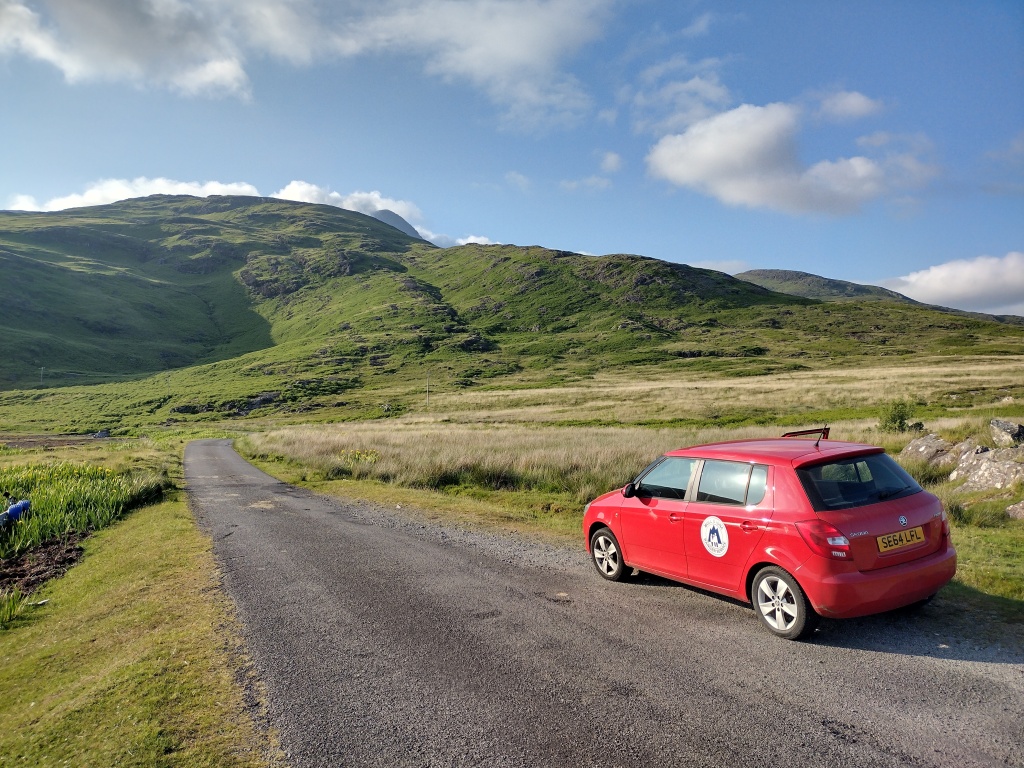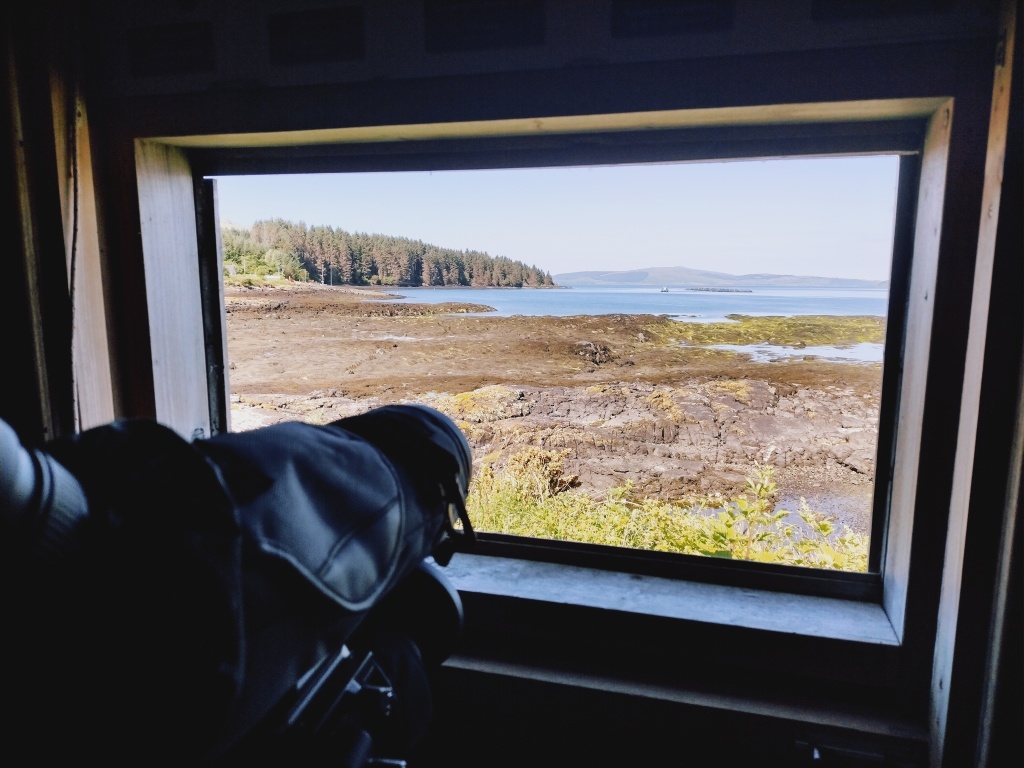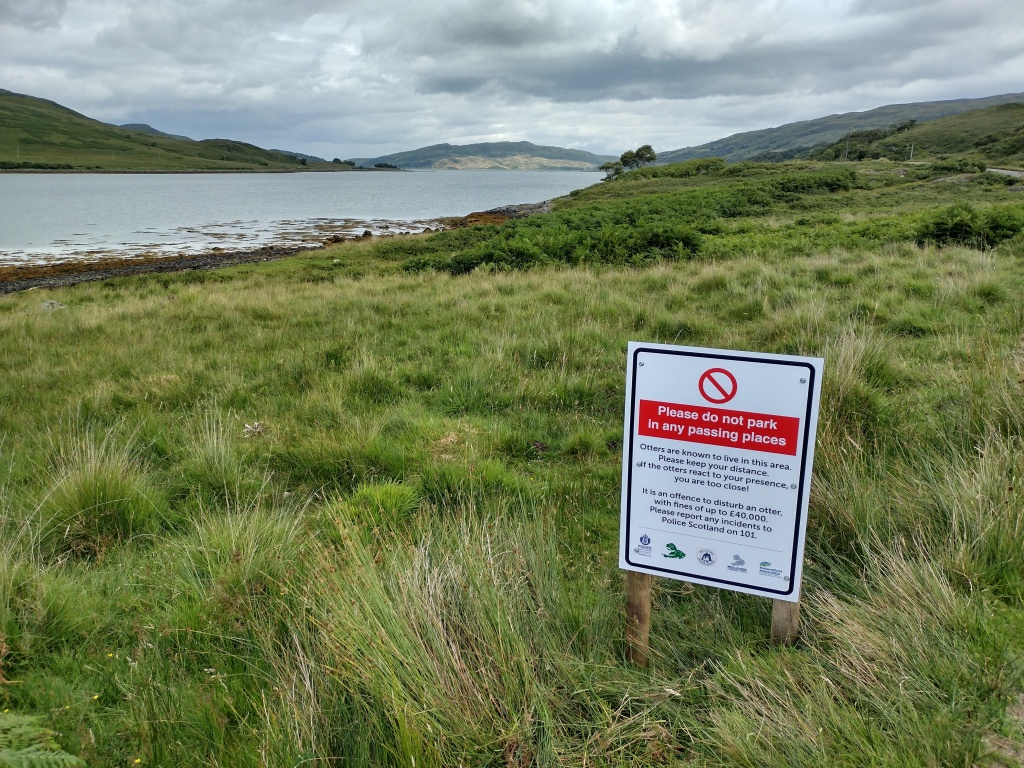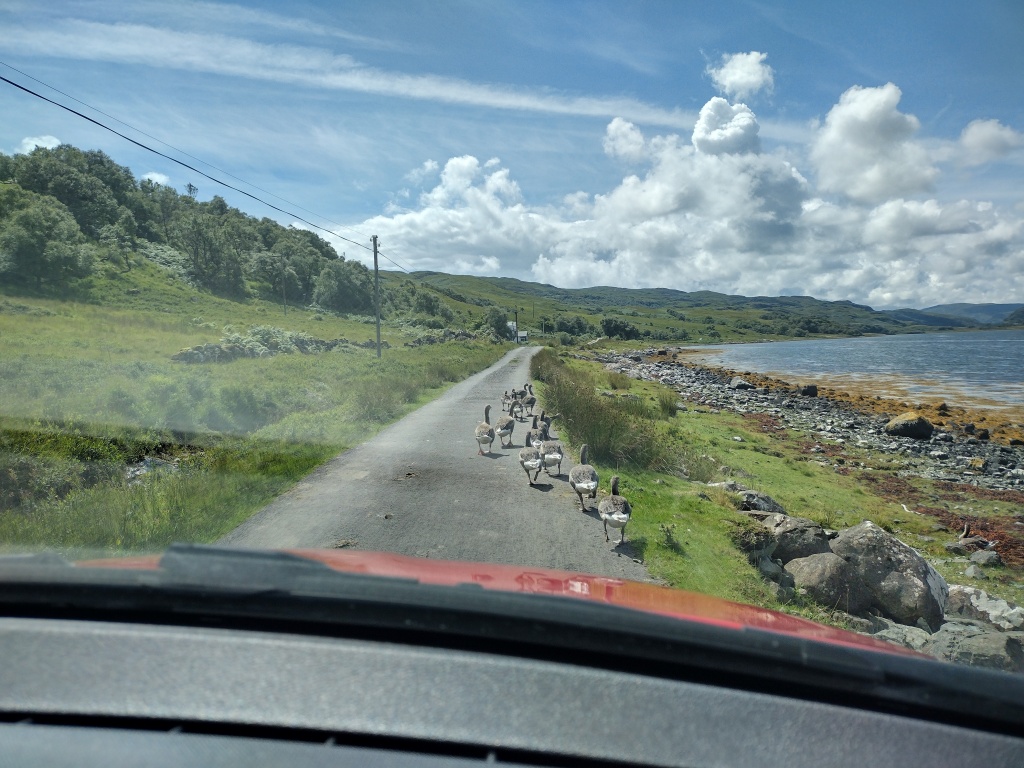What felt like a long period to be away from home, a partner and a cat, has flown by a bit too quickly. Those swallows that were just arriving as I started my job are now gathering together, preparing for their long journey south, just as I prep for a return to my studies. Eagle chicks have fledged, leaves are starting to turn, hay has been baled. It’s been nice to watch it all happen across such a large area, having had the opportunity to travel around the whole island regularly in the course of my weekly duties.

The highlights have been many – usually wildlife related. Watching a white-tailed eagle build up strength in its wings before leaving the nest was one. Spending a morning in a wildlife hide with 15 holidaymakers as we watched an otter feed for 45 minutes (before another three white-tailed eagles arrived in trees opposite) was another. And I had a lovely evening standing amongst dozens of bats at Loch Torr, just earlier this week.

There’s been plenty to enjoy with the people I’ve worked with as well. Jan has been a hero helping me acclimatise to the role (and helping me find accommodation!), while the occasional workload overlap with Emily at the south end of the island also helped me find my feet. One project I was involved in feels like it’s only just begun – A stakeholder group involving island-based representatives from MICT, Police Scotland, Mull Otter Group, the RSPB and wildlife tour operators, alongside input from national organisations including NatureScot and the National Wildlife Crime Unit, came together to address the recent issues with otter disturbance on the island. The result was new otter-watching guidance, designed to be concise and easy to understand to all visitors – whether they intend to have the binoculars out all day, or if the exciting sighting of an otter is secondary to their planned activities. While it will appear basic to some, we hope it cuts through to those who wouldn’t necessarily research wildlife-watching fieldcraft before they arrive. If anything, it was great to have a group of likeminded individuals from a wide range of organisations come together to help protect one of the island’s star species. The plan is to print leaflets and posters with this guidance, and promote this as a collective concern for all involved.

So thank you to all who have been involved in the above project. And a thank you to all the residents who have kept me informed of concerns from their own area, all the visitors who have been a pleasure to speak to at lochsides and in wildlife hides, and especially to all the café owners who’ve kept me well fed and caffeinated throughout the summer. Til next time!
Paul Fraser, Seasonal Wildlife and Community Engagement Ranger

Protect Mull’s otters
When watching wildlife, the animals’ welfare should always come first.
- Keep your distance. If an otter reacts to your presence, then you are too close.
- Remain quiet, keep a low profile and stay downwind. Move slowly, and only when the otter is underwater.
- Never follow or chase an otter if it tries to leave the area.
- Do not disturb other species, particularly ground-nesting birds.
- Park responsibly. Never block roads or passing places.
Remember, it is an offence to disturb an otter or obstruct access to its breeding ground or resting place. This is punishable with up to 12 months imprisonment and a fine of up to £40,000. Please report any incidents to Police Scotland on 101.